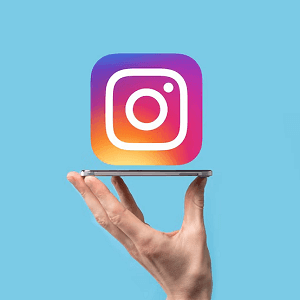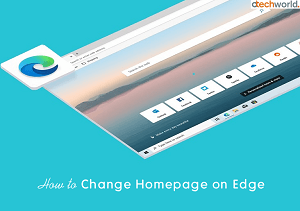How to Read Instruments by Computer Software: Your Crash Course in Digital Wizardry
Listen up—today’s world is all about plugging old-school gear into the digital fast lane, and figuring out how to read instruments by computer software is the ticket. We’re not just talking dusty thermometers or clunky oscilloscopes anymore; this is about hooking up everything—industrial sensors, medical gadgets, even that synth in your garage—to a screen that does the heavy lifting. Whether you’re in a factory, a hospital, a lab, or jamming in your basement, knowing how to read instruments by computer software is like unlocking a superpower for data, precision, and getting shit done. Heck, even tech news like DailyBizBytes is buzzing about this shift—traditional tools getting a high-tech makeover is the kind of story they eat up.

Introduction to Instrument Reading via Software
Back in the day, you’d squint at a gauge, scribble some numbers, and pray you didn’t mess it up. Think thermometers, pressure dials, or those funky oscilloscopes—pure manual labor. Now? Hook ‘em to a computer, and boom—real-time data’s flowing like a river. Learning how to read instruments by computer software isn’t just a neat trick; it’s a game-changer. No more guesswork, no more fat-fingered notes—just clean, instant reads you can trust. From automating a factory line to tweaking a beat in Logic Pro, this is where the old meets the new, and it’s damn satisfying.
I’ve tinkered with tech long enough to know this shift’s massive. It’s not about replacing the gear—it’s about juicing it up. Efficiency spikes, errors drop, and you’ve got automation in your pocket. Let’s unpack why this matters and how to pull it off.
Why Use Software to Read Instruments?
So, why bother with how to read instruments by computer software? Simple—it’s better, faster, smarter. Here’s the dirt:
- Accuracy – Humans suck at precision—software nails it every time, no squinting required.
- Real-time Monitoring – Want live updates? Hook it up, and you’re watching data dance as it happens.
- Data Logging – Need a history lesson? Software stashes years of readings for you to chew on later.
- Automation – Set it and forget it—software reads, crunches, even reacts without you lifting a finger.
- Remote Access – Cloud magic means you can peek at your gear from a beach halfway across the world.
This isn’t just convenience—it’s a power-up. Ditch the clipboard; this is how pros play.
Common Instruments and Compatible Software
To crack how to read instruments by computer software, you’ve got to know the players—here’s the gear and the apps that make ‘em sing:
- Multimeters – Voltage, current, resistance—FlukeView or NI LabVIEW turn these into data goldmines.
- Temperature Sensors – Thermocouples, RTDs—Arduino IDE, LabVIEW, or MATLAB keep the heat in check.
- Sound Equipment – MIDI keyboards, audio interfaces—Ableton Live or Pro Tools turn noise into art.
- Oscilloscopes – Tektronix OpenChoice or Rigol UltraScope make wave-watching a breeze.
- Medical Instruments – ECGs, EEGs—LabChart or BIOPAC bring patient vitals to life.
Each combo’s a little different, but the vibe’s the same: plug in, fire up the software, and let it rip. It’s like giving your tools a brain.
Communication Protocols and Interfaces
Here’s the nerdy bit of how to read instruments by computer software—how they talk to each other. It’s all about the handshake:
- USB – Plug-and-play king—most new gear’s got it baked in.
- RS232/Serial – Old-school but tough—industrial rigs still love it.
- GPIB – Test gear’s VIP pass—pricey, but precise.
- Ethernet/Wi-Fi – Networked and slick—your data’s on the move.
- Bluetooth – Portable toys—wearables, sensors, no cords needed.
These are the pipes—data flows from instrument to screen, and the software’s the translator. Get this right, and you’re golden.
Steps Involved in Reading Instruments via Software
Ready to roll with how to read instruments by computer software? Here’s the playbook:
- Connecting the Instrument – Grab the right cord—USB, serial, whatever—and plug it in.
- Installing Drivers – No driver, no dice—download what the gear needs to chat with your PC.
- Selecting the Right Software – Pick the app that fits—LabVIEW for labs, Pro Tools for tunes.
- Configuring Communication Settings – Baud rate, COM port, IP—tweak it ‘til it clicks.
- Reading the Data – Hit go—watch the software pull numbers, waves, whatever.
- Data Interpretation and Logging – Graphs, tables, CSV files—your data’s now a story.
It’s not rocket science—just a few steps to turn raw signals into something you can use.
Practical Applications
Here’s where how to read instruments by computer software gets real:
- Industrial Automation – Factories hum—sensors spit pressure, flow, temp to SCADA via PLCs.
- Healthcare – Hospitals track heartbeats, brainwaves—computers keep docs in the loop.
- Research Laboratories – Scientists geek out—MATLAB or Python scripts pull lab data fast.
- Music and Audio Engineering – Musicians jam—MIDI and waveforms hit DAWs like a pro.
Every field’s got its spin, but the core’s the same: smarter, sharper work.
Popular Software for Reading Instruments
The tools that nail how to read instruments by computer software? Here’s the A-list:
- NI LabVIEW – Engineering Swiss Army knife—labs, factories, you name it.
- MATLAB – Math nerd’s dream—models and controls like a champ.
- Python (PySerial, PyVISA) – Free and flexible—code your way to glory.
- SCADA Systems – Industrial muscle—reads and runs the show.
- FlukeView Forms – Electrical gear’s best bud—multimeters love it.
- Arduino IDE – Tinkerer’s playground—cheap and easy for starters.
Pick your poison—these are the heavyweights making it happen.
Coding for Instrument Reading
Want to flex on how to read instruments by computer software? Bust out some code. Here’s a Python quickie:
import serial
ser = serial.Serial(‘COM3’, 9600) # Hook up the gear
while True:
data = ser.readline()
print(f”Instrument Reading: {data.decode().strip()}”)
This grabs data from a serial port—think Arduino sensors or a basic multimeter. It’s raw, it’s simple, and it works. Coding’s your shortcut to custom control.
Challenges and Considerations
Mastering how to read instruments by computer software ain’t all sunshine—here’s the grit:
- Compatibility – Some gear’s too old or too picky to play nice.
- Data Format – Raw outputs can be gibberish—decoding’s a chore.
- Latency – Lag kills real-time—cheap setups feel it most.
- Security – Remote reads? Hackers salivate—lock it down.
- Cost – Big-name software can gut your wallet.
It’s not perfect, but the payoff’s worth the wrestle.
Conclusion
Here’s the deal—how to read instruments by computer software is your golden ticket in today’s digital mess. Labs, clinics, studios, factories—it’s the same story: work smarter, not harder. Tech’s only getting crazier, and the tools to tap into your gear are leveling up fast. Whether you’re a newbie wiring an Arduino or a pro running industrial rigs, nailing how to read instruments by computer software is your edge—insights, automation, the works.
Don’t sleep on this—jump in, mess around, and own it. Precision, productivity, innovation—it’s all there waiting.



